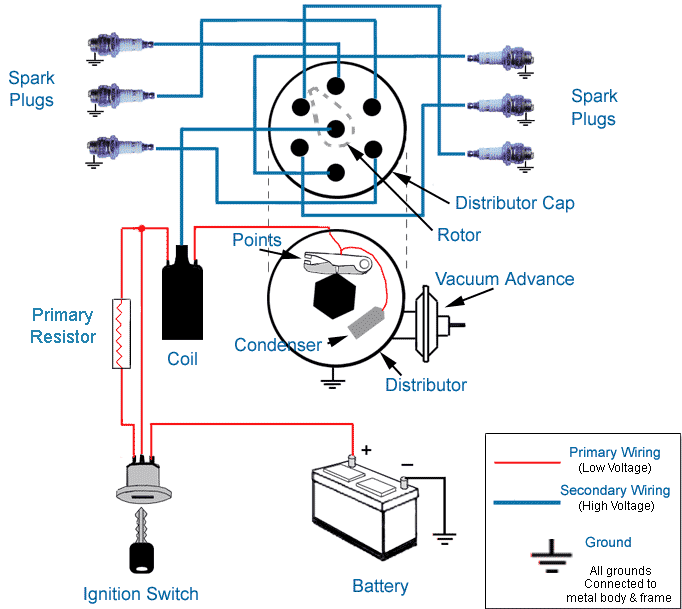
Terminology -
TDC - Top Dead Centre
BTDC - Before Top Dead Centre
Dizzy - distributor
CR - compression ratio
To maximize power and economy potential from any engine, burning the compressed fuel/air mixture at precisely the right point throughout the engines entire rpm range is essential. This ‘point’ is generally somewhere before the piston reaches TDC on its power stroke described in degrees - i.e. 10 degrees BTDC. This point isn’t constant throughout the rpm range. Low rpm values are normally less than high ones.
Ultimately the dizzy provides this spark at exactly the right point to effect this burn. Engine size, cam type, head mods/efficiency, valve sizes, compression ratio, fuel used, inlet/exhaust manifolding and carburetion all influence just when this should occur for optimum power. From this it can be seen that one dizzy from one performance type engine may not be suitable for another of similar output, and that a standard dizzy is unlikely to be right for a modified one.
All dizzies contain the same system for controlling when the spark occurs at different rpm - two weights and two springs. The weights are mounted on a plate fixed to the dizzy spindle. As the dizzy spindle spins faster with rising engine rpm, the weights slide outwards under centrifugal force. These then rotate the cam that operates the points - making the spark occur earlier (advancing the timing). The rate at which they are allowed to move is controlled by the springs that are connected to the points cam at one end and anchored to the fixed plate at the other. The springs are of different tensions, one controlling low rpm advance the other high rpm advance. Total advance is controlled by a stop on the points cam. These three things altogether influence what is commonly called the (centrifugal) advance curve. Altering the combinations and parameters tailors each dizzy to their respective engines.
The fourth parameter used to further control how the advance curve is applied is the vacuum advance unit. At part throttle openings, the engine isn't inhaling a full lungs-worth of fuel/air mixture, so is performing well below its dynamic compression ratio value. In other words, there's less in there to squeeze prior to ignition for the power stroke. To this end, higher ignition values can be used to produce better power and economy without detonation becoming a problem. As the dizzy is already tailored to supply the only set of values it can - being mechanical - the vacuum advance unit literally pulls the advance curve forward so it produces these required higher values. Once the throttle is opened to give more acceleration/power the vacuum is lost, and the dizzy returns to its original mechanical advance curve values.



